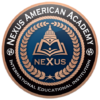
Overview
This program was designed to improve the skills of professionals in the field of occupational safety and health. This diploma offers the theoretical and practical skills necessary to develop those professionals’ capabilities of protecting lives and property from damage by accidents. In addition, it provides the skills necessary for curbing hazards and accidents, improving quality and efficiency and minimizing loss due to accidents and injuries.
Program Objective and Outcomes
The objective of the higher diploma program in occupational safety engineering is to provide private and public sectors with qualified engineers capable of handling their responsibilities and duties in the field of occupational health and safety. Achieving this objective will elevate the performance level of doing their duties and enhancing the role of occupational health and safety in the workplace. In particular, the program aims at developing the following skills and capabilities among the diploma students:

- Preparing safety systems strategies.
- Analyzing risk in the workplace and designing effective safety programs to deal with hazards.
- Preparing plans to execute safety programs.
- Operating safety programs.
- Reviewing safety programs and monitoring their effectiveness.
- Evaluating safety programs by comparing their results with applicable safety standards in Saudi Arabia.
- Mastering the ways of improving awareness of safety importance in the workplace.
- Mastering the methods to spread occupational safety culture.
- Evaluating and auditing safety system programs in different types of workplaces.
Major Requirements: 36
Description
Outcomes
- Examine key principles of environmental technology.
- Assess processes for treating water.
- Analyze piping systems.
- Evaluate solid waste handling methods.
- Evaluate hazardous waste handling methods.
- Examine air pollution.
- Explain noise pollution.
PreRequisites
Textbook(s)
Basic environmental technology: Water supply, waste management, and pollution control (Rev: 6th ed.)
Publisher: Pearson (2015)
Author: Nathanson, J. A., & Schneider, R. A.
ISBN: 9780132840149
Price: $115.12
Description
Outcomes
- Discuss historical aspects of occupational safety and health (OSH).
- Examine the regulatory framework of occupational safety and health (OSH).
- Describe standards that are related to occupational safety and health (OSH).
- Explain the integration of key processes necessary for the control of occupational injuries and illnesses.
- Recommend strategies for the control of common workplace hazards.
- Apply hazard assessment tools as they relate to industrial hazards.
- Apply management tools for successful decision-making for endeavors related to occupational safety and health (OSH).
- Discuss the complex environment in which the occupational safety and health (OSH) professional works.
PreRequisites
Textbook(s)
The basics of occupational safety (Rev: 3rd ed.)
Publisher: Pearson (2019)
Author: Goetsch, D. L.
ISBN: 9780134678719
Price: $115.68
Outcomes
- Apply safety and health theories to construction practices.
- Apply Occupational Safety and Health standards and related practices to construction.
- Describe the Occupational Safety and Health Administration’s multi-employer worksite policy.
- Examine methods used to control common construction hazards.
- Discuss social demographic issues related to construction safety.
- Explore safety and health management concepts related to construction safety.
- Discuss workers’ compensation programs as they apply to construction settings.
- Examine training and hazard communication strategies.
PreRequisites
Textbook(s)
Integrated Learning Resource
Publisher: (No information available)
Author: (No information available)
ISBN: (No information available)
Price: (No information available)
Description
Outcomes
- Assess Occupational Safety and Health Administration (OSHA) rulemaking, enforcement, and adjudication processes.
- Evaluate occupational safety and health regulations and laws.
- Evaluate OSHA’s approach to applying the General Duty Clause in enforcement actions.
- Assess employee rights related to workplace safety.
- Describe OSHA citation classifications and related penalties.
- Outline employer rights and responsibilities following an OSHA inspection.
- Examine affirmative defenses used to contest alleged violations.
- Explain enforcement and the judicial review process of criminal OSH violations.
PreRequisites
Textbook(s)
Integrated Learning Resource
Publisher: (No information available)
Author: (No information available)
ISBN: (No information available)
Price: (No information available)
Description
Outcomes
- Examine chemistry fundamentals.
- Discuss common units of measure.
- Explain the chemistry of common substances.
- Evaluate chemical interactions as they relate to control of potential hazards.
- Classify hazardous materials according to Department of Transportation (DOT) classification and warning systems.
- Determine strategies for dealing with chemical properties of specific types of hazardous substances.
- Analyze important standards related to hazardous substances.
- Apply information resources commonly used in emergency response operations.
- Examine widely used hazardous materials classification and labeling systems.
PreRequisites
- CHM 1030
Textbook(s)
Chemistry of hazardous materials (Rev: 6th ed.)
Publisher: Pearson (2014)
Author: Meyer, E.
ISBN: 9780133146882
Price: $85.10
Description
Outcomes
- Develop effective safety management policy statements, goals, and objectives.
- Evaluate how accountability affects performance management in safety management programs.
- Analyze the importance of clarity in assigning safety-related job tasks.
- Examine the components of an effective hazard prevention and control system.
- Apply risk management principles to reduce the impact of workplace hazards.
- Relate continuous improvement principles to safety management concepts.
- Examine management tools necessary to implement effective safety management systems.
PreRequisites
- BOS 3001
Textbook(s)
Advanced safety management: Focusing on Z10 and serious injury prevention (Rev: 2nd ed.)
Publisher: Wiley (2014)
Author: Manuele, F. A.
ISBN: 9781118645680
Price: $80.30
Description
Outcomes
- Describe characteristics of ergonomically designed workstations.
- Examine human factors related to design criteria.
- Discuss body-centered design for mitigating common workplace stressors.
- Explain prescribed practices for training and instruction related to workplace ergonomics.
- Examine key management approaches for addressing workplace ergonomics issues.
- Perform ergonomics-related hazard assessments.
- Recommend ergonomically sound control strategies for workplace situations.
- Summarize ergonomics-related regulatory efforts and standards.
PreRequisites
- BIO 1100
- PHS 1110
Textbook(s)
Occupational ergonomics: A practical approach
Publisher: Wiley (2016)
Author: Stack, T., Ostrom, L. T., & Wilhelmsen, C. A.
ISBN: 9781118814215
Price: $97.50
Description
Outcomes
- Evaluate OSHA policies and interpretations related to OSHA standards.
- Discuss common violations of OSHA standards.
- Examine relationships between OSHA standards and safety and health management.
- Analyze workplace compliance with OSHA standards.
- Apply OSHA safety and health standards to the workplace.
- Describe OSHA enforcement procedures.
- Develop internal training based on OSHA regulations.
PreRequisites
Textbook(s)
Integrated Learning Resource
Publisher: (No information available)
Author: (No information available)
ISBN: (No information available)
Price: (No information available)
Description
Outcomes
- Summarize important foundational aspects of toxicology.
- Explain how toxins are processed in biological systems.
- Assess the environmental risk of chemical substances based on toxicity.
- Examine the impact of exposure to various types of toxins.
- Explain product labeling requirements for public safety.
- Evaluate the effects of toxins on target organs of the body.
- Discuss the objectives of toxicity testing.
PreRequisites
- CHM 1030
- BIO 1100
Textbook(s)
Principles and practice of toxicology in public health (Rev: 2nd ed.)
Publisher: Jones & Bartlett Learning (2014)
Author: Richards, I. S., & Bourgeois, M. M.
ISBN: 9781449645267
Price: $124.55
Description
Outcomes
- Discuss the regulatory background of industrial hygiene.
- Apply scientific principles to the practice of industrial hygiene.
- Relate industrial hygiene practices to environmental health and safety programs.
- Evaluate industrial hygiene management practices.
- Explore health hazards in the workplace.
- Perform basic calculations related to industrial hygiene.
- Evaluate types of hazard controls.
PreRequisites
- MAT 1302
- BIO 1100
- CHM 1030
Textbook(s)
Integrated Learning Resource
Publisher: (No information available)
Author: (No information available)
ISBN: (No information available)
Price: (No information available)
Description
Outcomes
- Evaluate the interrelationship of codes, standards, and inspections in fire prevention.
- Examine the building code development and modification process.
- Explain the use and value of fire resistant materials in the construction process.
- Analyze fire tests and rating systems that assess the quality of fire resistant materials used in construction.
- Discuss the inspection procedures for each type of suppression system.
- Summarize a comprehensive overview of the general fire safety provisions for occupied buildings.
- Demonstrate the rationale for the general fire safety provisions as methods of fire protection.
- Investigate characteristics of unsafe structures in accordance to fire codes.
- Develop strategies to bring an unsafe structure into compliance with proper fire codes.
- Discuss the installation, maintenance, and inspection procedures for water-based, halon, dry-chemical, and clean-agent fire suppression systems.
PreRequisites
Textbook(s)
Fire inspector: Principles and practice
Publisher: Jones & Bartlett Learning (2012)
Author: International Association of Fire Chiefs, National Fire Protection Association.
ISBN: 9780763749392
Price: $111.63
Description
Outcomes
- Evaluate safety, health, and environmental hazards in the workplace.
- Explain important laws, codes, and regulations related to occupational safety and health and the environment.
- Recommend appropriate means for controlling safety, health, and environmental hazards.
- Perform appropriate calculations regarding the measurement, evaluation, and control of safety, health, and environmental hazards.
- Evaluate safety, health, and environmental training and management techniques.
- Apply fundamental business principles, practices, and metrics to safety, health, and environmental operations.
- Explain scientific facts and concepts that impact the occupational safety and health professional.
PreRequisites
- PHS 1110
- CHM 1030
- BIO 1100
- MAT 1302
Textbook(s)
Safety professional’s reference and study guide (Rev: 2nd ed.)
Publisher: CRC Press (2015)
Author: Yates, W. D.
ISBN: 978-1-4822-5665-9
Price: $130.99
ELECTIVES
Description
Outcomes
- Determine communication processes that guide organizational behavior.
- Employ communication techniques for effective strategic planning.
- Explain communication techniques that improve employee trust and engagement.
- Relate effective communication techniques to public relations and marketing.
- Recommend communication techniques that are effective in managing conflict.
- Integrate strategies of communication for managing organizational performance.
- Summarize the differences in communication styles of managers vs. leaders.
- Create a communication strategy that fosters change and innovation.
PreRequisites
Textbook(s)
Integrated Learning Resource
Publisher: (No information available)
Author: (No information available)
ISBN: (No information available)
Price: (No information available)
Description
Outcomes
- Evaluate the effect of attitude, personality, and goal setting on work performance development.
- Describe the impact of time management in the workplace.
- Explain the meaning of ethical behavior in the workplace.
- Analyze the advantages to an organization offering quality customer service and human resources.
- Analyze techniques used to promote effective communication, accountability, and positive relationships within the workplace.
- Explain the dynamics of teamwork, to include motivation, conflict resolution, and leadership.
- Construct a resume package that demonstrates methods for highlighting job-related skills.
- Critique interview techniques.
PreRequisites
Textbook(s)
Professionalism: Skills for workplace success (Rev: 4th ed.)
Publisher: Pearson (2016)
Author: Anderson, L. E., & Bolt, S. B.
ISBN: 978-0-321-95944-7
Price: $61.95
Description
Outcomes
- Analyze the impact of change and innovation in organizational processes.
- Evaluate the role of strategic planning in organizations.
- Recommend ways to motivate employees by applying a human behavior theory, a leadership theory, and a leadership style.
- Recognize the impact of ethics on shaping an organization.
- Explore the value of corporate social responsibility.
- Identify the impact of different types of leadership on organizational behavior.
- Discuss the value of human capital in an organization.
- Relate resource management to strategic planning in an organization.
- Define the five components of management: planning, organization, staffing, directing, and control.
- Apply managerial skills, principles and decision-making strategies to the implementation of business best practices.
PreRequisites
Textbook(s)
Integrated Learning Resource
Publisher: (No information available)
Author: (No information available)
ISBN: (No information available)
Price: (No information available)
Description
Outcomes
- Analyze the significance of the concept of leadership and the different leadership styles.
- Distinguish between the importance of vision, the motive to lead, and organizational climate.
- Explore various aspects of effective leadership, to include influence, follower motivation and effective followership.
- Illustrate the role of ethics and values in guiding organizational behavior.
- Articulate globalization and the resulting cultural implications of leadership, including unique considerations for leading multicultural teams.
- Analyze the role of leadership in decision-making processes that serve to establish an organizational climate oriented to meet business goals.
- Analyze methods used to effectively manage groups and teams.
- Evaluate different aspects of organizational change.
PreRequisites
Textbook(s)
Integrated Learning Resource
Publisher: (No information available)
Author: (No information available)
ISBN: (No information available)
Price: (No information available)
Description
Outcomes
- Describe important environmental concepts.
- Discuss the impact of environmental change on ecosystems.
- Assess the impact of human activity on the natural environment.
- Explain important conservation strategies.
- Examine environmental issues related to energy use.
- Summarize important environmental policies.
- Evaluate environmental sustainability efforts by industry.
PreRequisites
Textbook(s)
Environment: The science behind the stories (Rev: 6th ed.)
Publisher: Pearson (2018)
Author: Withgott, J., & Laposata, M.
ISBN: 9780134204888
Price: $190.51
Description
Outcomes
- Examine standards that govern the management of hazardous substances in the workplace.
- Explain the hazard communication requirements for hazardous materials used in the workplace.
- Evaluate workplace scenarios involving hazardous substances.
- Develop a basic hazard communication training program.
- Apply industry best practices for managing hazardous substances.
- Discuss transportation requirements for hazardous substances.
- Examine methods of monitoring effectiveness of programs related to hazardous substances.
- Develop a basic hazardous materials spill response plan.
PreRequisites
Textbook(s)
Hazardous material management and hazard communication (Rev: 2nd ed.)
Publisher: American Society of Safety Engineers (2012)
Author: Haight, J. M. (Ed.).
ISBN: 9781885581716
Price: $55.25
Description
Outcomes
- Compare key management programs and practices related to fleet safety and security.
- Identify benefits of proactive fleet safety management.
- Examine fleet safety issues that are unique to specific industry and organizational needs.
- Explain contemporary practices in driver training and instruction.
- Describe safety-related responsibilities of fleet managers and drivers.
- Evaluate motor fleet accident data analysis and trending processes.
- Apply hazard analysis and control techniques to fleet safety.
- Examine hazardous materials shipping and storage requirements.
PreRequisites
Textbook(s)
Fleet safety: For safety professionals and fleet managers
Publisher: American Society of Safety Engineers (2015)
Author: Haight, J. M. (Ed.).
ISBN: 9780939874002
Price: $65.00
Description
Outcomes
- Explain safety and health training requirements specified by standard setting organizations.
- Examine safety and health training theories and their applications.
- Develop strategies for communicating safety and health training in the workplace.
- Discuss management’s role in safety and health training.
- Examine methods for assessing safety and health training performance.
- Evaluate best practices in safety and health training.
- Discuss means of overcoming cultural and language barriers to provide effective training to workers.
PreRequisites
Textbook(s)
Hazard prevention through effective safety and health training
Publisher: American Society of Safety Engineers (2012)
Author: Haight, J. M. (Ed.)
ISBN: 978-1-885581-74-7
Price: $27.95
Description
Outcomes
- Recognize the safety supervisor’s goals and responsibilities in the workplace, both up and down the corporate ladder.
- Identify and evaluate chemical and physical hazards in the workplace.
- Define acceptable levels of risk for department operations.
- Define and assess control of hazards to prevent injuries, illness, and property damage.
- Discuss the concepts and development of an employee safety program.
- Explain how to choose and use PPE and conduct job safety analyses.
- Discuss employee injury record keeping and analysis.
- Summarize the role of ergonomics in the workplace.
- Explain how to conduct safety inspections and incident investigations.
- Differentiate between Safety and Environmental responsibilities for supervisors regarding major federal, state, and local regulatory mandates, including instances where the responsibilities overlap.
- Recognize the principles of machine safeguarding and safe use of hand and portable power tools.
- Illustrate key elements of safe materials handling and storage.
- Identify key elements of a workplace electrical and fire safety program.
PreRequisites
Textbook(s)
Supervisors’ safety manual (Rev: 10th ed.)
Publisher: Author (2009)
Author: National Safety Council
ISBN: 9780879122881
Price: $125.78
Description
Outcomes
- Explain risk management concepts related to safety management and accident prevention.
- Evaluate analytical tools that assess workplace hazards and risks.
- Integrate occupational safety and health programs into the total risk management process.
- Discuss how individual perception of risk contributes to risk-taking behavior.
- Create a workplace assessment for hazards and risks.
- Apply risk-reduction strategies to reduce workplace hazards.
- Determine the acceptability of residual risks after risk-reduction tactics are applied.
PreRequisites
Textbook(s)
Risk assessment: A practical guide to assessing operational risks
Publisher: Wiley (2016)
Author: Popov, G., Lyon, B. K., & Hollcroft, B.
ISBN: 9781118911044
Price: $97.50
Description
Outcomes
- Identify key benefits of conducting accident investigations.
- Describe the accident investigation process.
- Apply accident investigation techniques to realistic case study scenarios.
- Evaluate analytical processes commonly used in accident investigations.
- Compare various accident causation theories and models.
- Examine the relationship between accident investigation and hazard prevention.
- Describe managerial practices for ensuring implementation of corrective actions.
PreRequisites
Textbook(s)
Accident investigation techniques: Basic theories, analytical methods, and applications (Rev: 2nd ed.)
Publisher: American Society of Safety Engineers (2012)
Author: Oakley, J. S.
ISBN: 978-1885581624
Price: $35.04
Description
Outcomes
- Discuss the relationship of Process Safety to an organization’s overall accident prevention efforts.
- Explain the purpose of OSHA’s Process Safety Management (PSM) Standard.
- Identify the 14 elements required by the PSM standard.
- Identify hazards and risks commonly found in the process industry.
- Select effective control measures for identified process industry hazards.
- Explain the various methodologies used to develop a process hazard analysis.
- Describe the components necessary for an effective emergency response plan.
- Use an accident scenario to assess compliance with the PSM standard and industry best practices.
PreRequisites
Textbook(s)
Safety, health, and environmental concepts for the process industry (Rev: 2nd ed.)
Publisher: Delmar (2013)
Author: Speegle, M.
ISBN: 9781133013471
Price: $111.35



 (849,711 votes, average: 4.90 out of 5)
(849,711 votes, average: 4.90 out of 5)



































